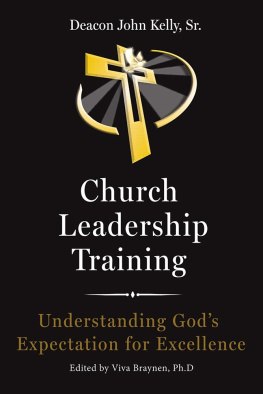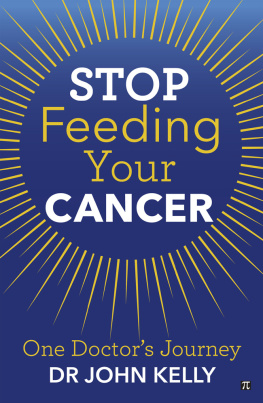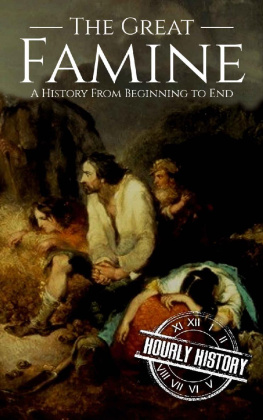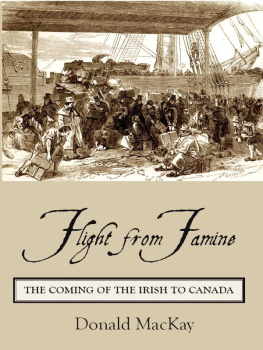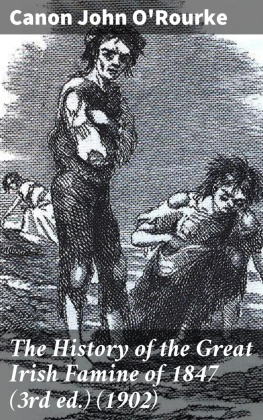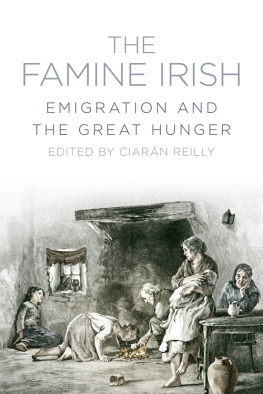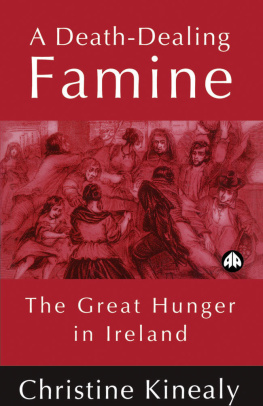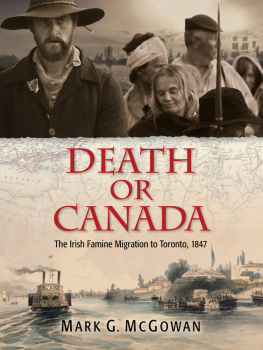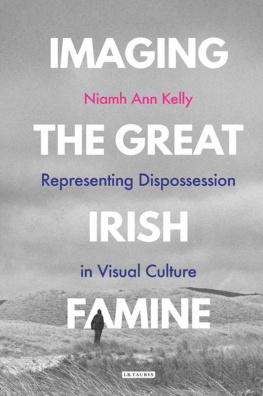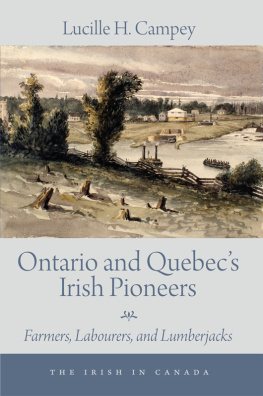John Kelly - The Graves Are Walking: The Great Famine and the Saga of the Irish People
Here you can read online John Kelly - The Graves Are Walking: The Great Famine and the Saga of the Irish People full text of the book (entire story) in english for free. Download pdf and epub, get meaning, cover and reviews about this ebook. publisher: Henry Holt and Co., genre: Art. Description of the work, (preface) as well as reviews are available. Best literature library LitArk.com created for fans of good reading and offers a wide selection of genres:
Romance novel
Science fiction
Adventure
Detective
Science
History
Home and family
Prose
Art
Politics
Computer
Non-fiction
Religion
Business
Children
Humor
Choose a favorite category and find really read worthwhile books. Enjoy immersion in the world of imagination, feel the emotions of the characters or learn something new for yourself, make an fascinating discovery.

- Book:The Graves Are Walking: The Great Famine and the Saga of the Irish People
- Author:
- Publisher:Henry Holt and Co.
- Genre:
- Rating:3 / 5
- Favourites:Add to favourites
- Your mark:
- 60
- 1
- 2
- 3
- 4
- 5
The Graves Are Walking: The Great Famine and the Saga of the Irish People: summary, description and annotation
We offer to read an annotation, description, summary or preface (depends on what the author of the book "The Graves Are Walking: The Great Famine and the Saga of the Irish People" wrote himself). If you haven't found the necessary information about the book — write in the comments, we will try to find it.
John Kelly: author's other books
Who wrote The Graves Are Walking: The Great Famine and the Saga of the Irish People? Find out the surname, the name of the author of the book and a list of all author's works by series.
The Graves Are Walking: The Great Famine and the Saga of the Irish People — read online for free the complete book (whole text) full work
Below is the text of the book, divided by pages. System saving the place of the last page read, allows you to conveniently read the book "The Graves Are Walking: The Great Famine and the Saga of the Irish People" online for free, without having to search again every time where you left off. Put a bookmark, and you can go to the page where you finished reading at any time.
Font size:
Interval:
Bookmark:

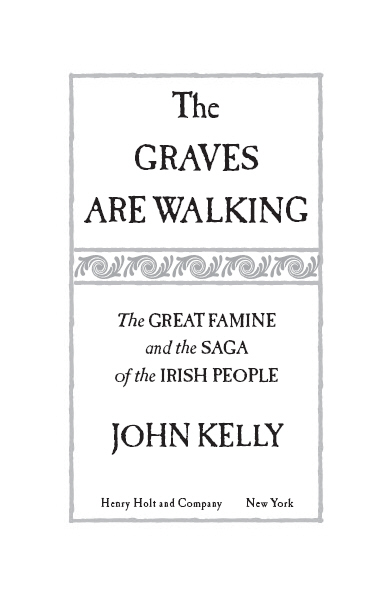
The author and publisher have provided this e-book to you for your personal use only. You may not make this e-book publicly available in any way. Copyright infringement is against the law. If you believe the copy of this e-book you are reading infringes on the authors copyright, please notify the publisher at: us.macmillanusa.com/piracy.
For Tim Malloy
They say that now the land is famine struck
The graves are walking.
Two nights ago, at [a] churchyard,
A herdsman met a man who had no mouth,
Nor eyes, nor ears; his face a wall of flesh;
He saw him plainly by the light of the moon,
What is the good of praying?
From scene 1, The Countess Cathleen, a verse drama by William Butler Yeats
Contents
Introduction
On a January morning in 1847, a carriage halted in front of a cabin outside Skibbereen, a market town in southwest Cork. The driver picked up the box on the carriage seat and handed it to the cabin owner, a small farmer, who had come out to greet him. My dog brought it home last night, the driver said, apologetically. After he left, the farmer removed the mutilated head from the box, took it into the cabin, and wrapped it in a cloth. Tomorrow, he would return his wifes decapitated head to her grave.
By early 1847, sights that poison life til life is done had become commonplace in Ireland. In the countryside, packs of feral dogs dug up the graves of the famine dead. In the cities, shoeless pauper women, with dead infants in their arms, stood on street corners, begging; along the coasts, men and women scaled three-hundred-foot cliffs in winter cold and wind in search of seagull eggs, or scoured the January tideline for seaweed. In the pestilential hospitals and workhouses, the weekly death rate rose into the thousands; in the crowded port towns, emigrants fought each other for space on the teeming docks. After more than two years of famine, people were no were longer leaving Ireland; they were fleeing, the way a crowd flees a burning buildingheedlessly, recklesslyon ships that had no business on any ocean, let alone a January ocean, and often they fled in defiance of the family bonds for which the Irish were justly famous. In the overpowering desire to get out, husbands deserted wives, parents, children, brothers, sisters, sisters, brothers.
The emigrants of this year are not like those of former years, the Cork Examiner declared in March 1847. They are now actually running away . Ask an emigrant his destination that March, and he would have replied, anywhere that wasnt Ireland. Among those too old, too young, too poor, sick, or frightened to leave, the ubiquity of death had compressed life to two simple wishes: an unmolested grave and a coffin to be buried in.
* * *
Terry Eagleton, a former professor of literature at Oxford, has called the Irish famine the greatest social disaster of 19th century European event with something of the characteristics of a low-level nuclear attack. In terms of the famines impact on Irish demography, that is a fair assessment. Between 1845 and 1855the period that encompasses the crisis years of 1845 to 1847 and their immediate aftermaththe Irish population of almost 8.2 million shrank by a third. Starvation and disease killed 1.1 million; emigration claimed another 2 million. On an absolute basis, the numbers pale in comparison to the 30 million Chinese who died in the Great Leap Forward famine of the early 1960s, and the 7 million who perished in the Ukrainian famine of the early 1930s; but Mao Zedongs China and Joseph Stalins Soviet Union were large, populous nations able to sustain catastrophic mortalities. Ireland was not. At the end of the famine, one out of every three people was gone, and the survivors felt as stunned and bewildered by the scale of the loss as the Italian poet Petrarch did after the Black Death:
Where are our dear friends now? What lightning bolt devoured them, what earthquake toppled them? What tempest drowned them? There was a crowd of us, now we are almost alone.
What made the famine so devastating?
The role of simple bad luck cannot be ignored. Had the potato failed two generations earlier, when Ireland had a lower rate of potato dependencyor two generations later, when the economy was on a sounder footing, the demographic impact might have been less severe. But the potato failed in the mid-1840s, when a generation-long collapse in peasant living standards had made the bottom two-thirds of the nation solely, or almost solely, reliant on the potato, and Ireland had not yet developed the physical, commercial, and human infrastructure needed to cope with a major catastrophe. There were not enough food stores in rural areas to feed the suddenly potato-less peasantry, not enough mills to process the hundreds of thousands of tons of provisions that had to be imported to replace the lost potatoes, not enough physicians to cope with the historic pestilence that broke out in the midst of the famine, and not enough engineers, administrators, or other trained personnel to organize and manage an efficient relief effort. A modern example of the difference such resources can make in a national crisis is the contrasting experiences of Haiti, a country with an undeveloped infrastructure, where in 2010 an earthquake of magnitude 7.0 killed as many as 85,000, and Japan, a sophisticated and resource-rich country, where in 2011 an earthquake, of 9.0 magnitude, a tsunami, and a nuclear meltdown, produced a death toll of under 25,000. In 1845, when Phytophthora infestans , the fungus that caused the crop failures, appeared for the first time, Ireland was Haiti.
However, bad luck, a primitive infrastructure, and a poverty bordering on immiseration can only explain so much of the one-third population loss. British policy makers also bore much responsibility for what happened. The accusation is not new, of course, but the modern brief against Britain contains a different set of accusations. The old Irish nationalist charge that London pursued a deliberate policy of genocide in Ireland has been discredited; modern research has also tempered another old charge. With the exception of one critical period in late 1846 and early 1847, famine Ireland imported more food than she exported. What turned a natural disaster into a human disaster was the determination of senior British officials to use relief policy as an instrument of nation building in one of the most impoverished and turbulent parts of the Empire. In particular, Whitehall and Westminister were eager to modernize the Irish agricultural economy, which was widely viewed as the principal source of Irelands poverty and chronic violence, and to improve the Irish character, which exhibited an alarming dependence on government and was utterly lacking in the virtues of the new industrial age, such as self-discipline and initiative. The result was a relief program that, in its particulars, was more concerned with fostering change than with saving lives. Thus, to facilitate agricultural modernization, London demanded that the inefficient small farmer, surrender his two- or three-acre plot in order to qualify for relief; and to promote self-reliance, Parliament passed the Poor Law Extension Act, which transferred the entire cost of relief to Ireland. The Extension Act proved a great boon for Irish tax collectors, whose numbers increased by 222.5 percent during the famineand for Irish coffin makers, whose numbers increased by 187.6 percentbut not for the Irish peasantry, who were doing most of the dying. With saving lives reduced to a second order priority, the death toll continued its relentless march upward toward 1.1 million, carrying the headless mothers under one arm and the starving children under the other.
Font size:
Interval:
Bookmark:
Similar books «The Graves Are Walking: The Great Famine and the Saga of the Irish People»
Look at similar books to The Graves Are Walking: The Great Famine and the Saga of the Irish People. We have selected literature similar in name and meaning in the hope of providing readers with more options to find new, interesting, not yet read works.
Discussion, reviews of the book The Graves Are Walking: The Great Famine and the Saga of the Irish People and just readers' own opinions. Leave your comments, write what you think about the work, its meaning or the main characters. Specify what exactly you liked and what you didn't like, and why you think so.



